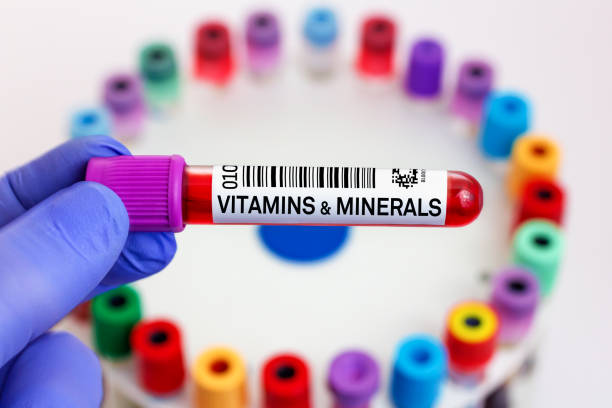Anaemia is a problem with insufficient red blood cells or haemoglobin. Haemoglobin is the element in red blood cells that transports oxygen throughout the body.
In cases of megaloblastic anaemia, red blood cells can be giant, oval and disc-shaped and die before the 120 days of average life expectancy of these cells.
Megaloblastic anaemia or vitamin deficiency anaemia is a condition that involves a lack of healthy red blood cells. This fact originates when the amounts of some vitamins in the body are below the average level. These vitamins are C, B-12, and folate. The causes of the deficiency and the corresponding anaemia may be insufficient intake of foods with these vitamins, or the body has difficulty absorbing them.
Causes of megaloblastic anaemia
Unbalanced diet or malabsorption by the body
Vitamin deficiency anaemia originates when the human body does not have the number of vitamins necessary to generate the adequate amount of red blood cells, which are the ones that transport oxygen from the lungs to the r body. The causes are an unbalanced diet or a disorder that causes the body not to absorb vitamins properly. Vitamin deficiency anaemia falls into three categories:
- Anaemia due to folate deficiency. Vitamin B-9 folate is found primarily in fruits and vegetables. In green leafy vegetables. A diet that consistently lacks these foods can cause a deficiency. Drinking alcohol in large quantities or taking certain medications can contribute to impairing the absorption of vitamin B-9.
- Anaemia due to vitamin B-12 deficiency Vitamin B-12 is primarily found in milk, meat, eggs and milk.
- Anaemia due to vitamin C deficiency. Vitamin C or ascorbic acid is found in foods such as oranges, red peppers, kiwi, parsley or broccoli, among many others.
Some other factors increase the risk of anaemia due to a lack of vitamins:
- Unbalanced diet. Vegetarians and vegans must compensate for the lack of some foods, such as milk or meat.
- Being pregnant usually means having a low level of folic acid.
- Smoking and excessive alcohol consumption.
- Abnormalities in the functioning of the intestines.
- Certain autoimmune disorders.
Symptoms of megaloblastic anaemia
Easy signs to spot
The symptoms of megaloblastic anaemia are easy to spot, but they are widespread.
- Fatigue.
- Paleness of the skin.
- Sensitive tongue.
- Muscular weakness.
- Diarrhoea.
- Irritability.
- Respiratory problems.
- Nausea and vomiting.
- Arrhythmias.
- Itching and tingling in the extremities.
- Mental confusion.
Diagnosis of megaloblastic anaemia
Detection through blood tests
The doctor gives the patient a physical exam and performs a blood test to determine the red blood cells in the body and the level of the three vitamins. Sometimes it is necessary to resort to other tests, such as antibody detection.
Treatment and medication for megaloblastic anaemia
Improve diet
for megaloblastic anaemia treatment, there are two ways. First, we must improve our diet to ensure that our food has adequate levels of vitamins. And we can also resort to taking vitamin supplements to alleviate the deficit in our diet.
Prevention of megaloblastic anaemia
Basic factor: balanced diet
The prevention of this disorder goes especially by following a balanced diet rich in vitamins. Foods with high folate levels are, among others, nuts, fruit in general, vegetables, rice and cereals. In addition, foods such as eggs, milk, shellfish, and meat are high in vitamin B-12. Fruits, broccoli and tomatoes, among others, are rich in vitamin C, so it is advisable to drink little alcohol, not smoke and exercise regularly.
Complications of megaloblastic anaemia in a child
In general, anaemia can cause the following:
- Problems in growth and development
- Physical exhaustion
- Low exercise tolerance
- Enlarged heart or heart failure if anaemia is severe
When to call doctor.
Call your child’s healthcare provider if your child has decreased energy, increased tiredness, or other symptoms of anaemia.
Important information about megaloblastic anaemia in children
When there is megaloblastic anaemia, the number of red blood cells decreases. These cells may be too large or abnormally shaped.
Too little folic acid or vitamin B12 is a common cause of megaloblastic anaemia. The symptoms are pretty similar to other types of anaemia, for example, tiredness and pale skin.
Megaloblastic anaemia due to vitamin deficiencies is treated with folate or vitamin B12 supplementation, as well as increasing the consumption of foods that contain these vitamins.






Thank you for your sharing. I am worried that I lack creative ideas. It is your article that makes me full of hope. Thank you. But, I have a question, can you help me?
Your article helped me a lot, is there any more related content? Thanks!